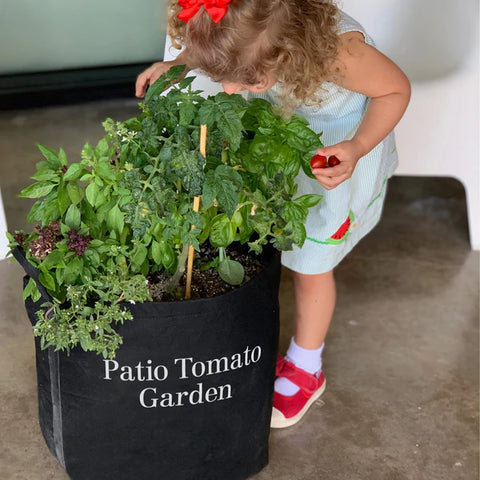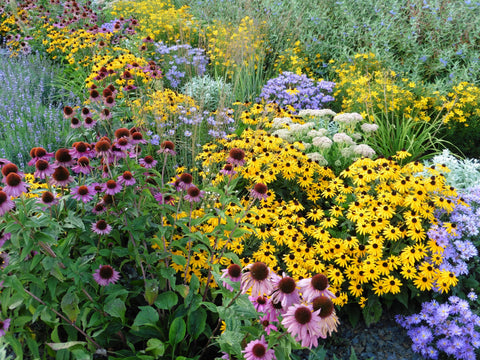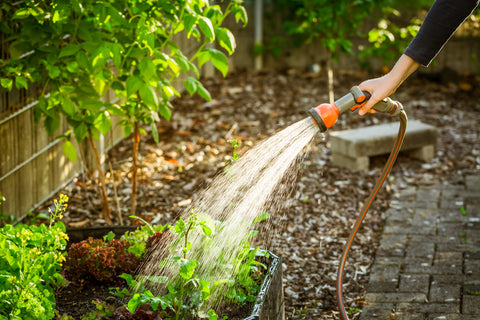Well, it's over 90 degrees as I write this, so it doesn’t matter what the calendar says - summer is here in my area.
As I look across the country at the weather maps, we are all over the place, from snow to rain to storms and heat. June is spring in the north and often oppressive heat in the South, where I garden!
What to Watch Out For
Southern gardeners have to be especially watchful at this time when it comes to pests, plant diseases, and drought. Find time to work in your gardens in the early morning or late in the day to avoid the hottest part of the day. (Northern gardeners should be watchful for these problems too, but not to the same degree!).
Growing Your Own Food
As the cost of food continues to rise, have you ever considered a small plot for growing your own? Many vegetables can be grown in pots on a patio, and taste just as good as they do from a garden. They can even be planted among your flowers and shrubs, as long as they get plenty of sun!
This time of year, the vegetable garden becomes my place of love and focus. As I plant seeds or seedlings, I salivate as I think of the wonderful taste of the fresh food that is to come.
If you are growing tomatoes, be sure to pick the suckers from the plants as they grow. This directs nutrients to the main part of the plant. If you haven’t already, be sure to stake the plants now. Add a few heat-tolerant herbs, such as sage, basil, oregano or thyme, in with your tomatoes. These add beauty and color to the garden, while adding great taste to your dishes!

These patio tomato gardens are an excellent choice for first-time growers - they also come in herb and hot pepper varieties!
As the soil heats up, plant peppers of all types in your garden. From hot peppers to bell, banana and even sweet peppers, these harvests are just weeks away form your enjoyment. Once again, they are great added to many dishes or frozen to eat later - that way, you can enjoy a taste from your summer garden all year long.
Depending on the space in your garden, fruit like cantaloupes and watermelons can be planted now as well. Remember they run on vines along the ground, so you will need more space to grow these. Other wonderful vine plants include cucumbers and squash of all kinds, winter or summer.
I could go on and on about growing one’s own food and the rewards it brings. If you haven’t tried it, give it a shot with one vegetable and see what I mean.
Adding Annuals and Perennials for Summer Color
In other parts of the garden, now is the time to plant annuals (which must be replanted each year) as well as perennials (plants that willl come back each year after being planted). Most of us love flowers, and now is the time our gardens - and our gardening wish lists - are filled with beautiful color! It is really hard for me to walk away from a beautiful plant that I don't already have.

Perennials like Coneflower, Black-Eyed Susan and Phlox, pictured here, add summer color to your garden - and they will come back each year
When buying flowers, remember to read the tag or do some research into what the plant requires. To get the look you want, you need to give the plant what it needs to be happy. If a flowering plant needs 6 hours of sun, that means it needs at least 6 hours to make it bloom - if you cut corners, you may not get the beautiful flowers you want!
Remember that the earth is rotating and sunlight shifts each day, so an area that starts out in lots of sun may end the season with only a few hours of light. To be successful, consider location before buying and planting.
Mulching, Fertilizing and Watering Tips
No matter what you are growing, make sure it is mulched in order to maintain good moisture in the soil. Don't over-fertilize any plant, especially in summer, as plants can become stressed when they are over-fertilized. Also avoid fertilizing when your plants are dealing with extreme heat or during extreme drought. Remember - a side dressing of compost is always welcome, as compost adds nutrients naturally.
In the heat of summer, it's important to water, but be sure not to overwater. Most plants need just an inch of water per week. In case you haven’t heard this trick, to measure how much you're watering, place an empty cat food or tuna can where the sprinkler hits. When the water level hits one inch, you're good to go.

Remember to water your plants with at least an inch of water each week - more in times of extreme heat or drought
And one last thing - stay on top of weeding! Plants compete with weeds for moisture and nutrients, and if you're not careful, the weeds can win. Weeds are free; your plants cost money - make sure you are protecting your investment this summer.
Read More: Ask a Master Gardener
Love our Ask a Master Gardener column? Check out Phyllis's previous columns here!




